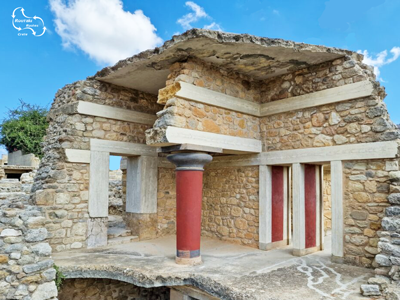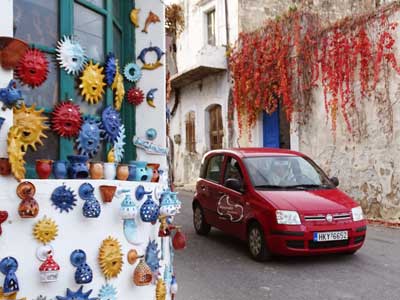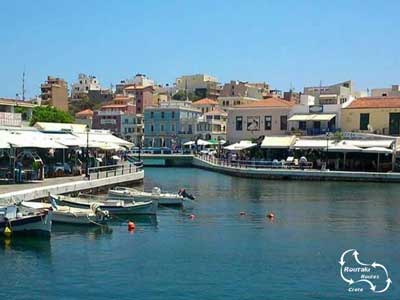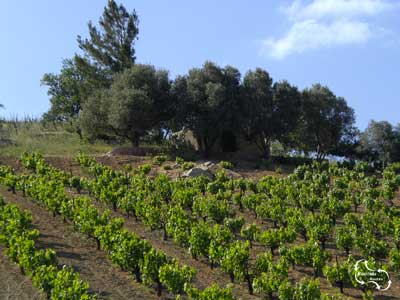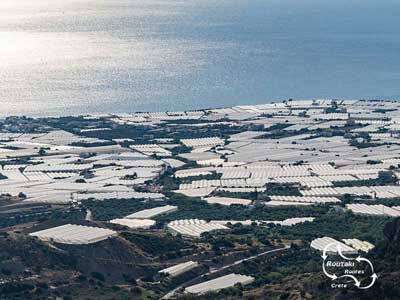do you know the most import city of the island?
Iraklio is the official capital of Crete
Since 1971 Iraklio is the official capital of the island. In many situtions it’s also called Heraklion. During a heavy earthquake in 1926 and again during world war two a large area of the city was destroyed. Many buildings dating from the Byzantine, Venetian and Turkish period were lost and were never rebuilt in the same style. They were replaced by boring concrete colossus. Because of the laws regarding earthquakes and a financial shortage, the building style was not very nice to look at. Therefore, Iraklio can come across as a chaotic and sometimes even dirty city with hardly any structure or parks.
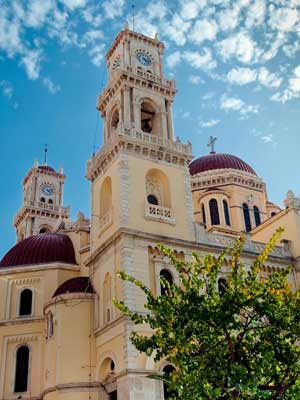
The fourth biggest city of Greece
Around 1900 Iraklio only counted about 12.000 inhabitants. The city started expanding in 1923 when large groups of Greeks were chased away from Turkey and settled on Crete, mainly in Iraklio. Nowadays the city counts about 150.000 inhabitants, which makes it the largest city on the island and the fourth largest city of Greece. The number of inhabitants is still increasing. Being the economical centre of the island, Iraklio draws many new inhabitants- especially youngsters- from the mountain villages. Also the University of Crete is established here and contributes to this development.
Volg de rode draad en ontdek Heraklion.
Important museums in Heraklion
As the capital of the island, Iraklio hosts several significant museums such as the archaeological museum. It is regarded as one of the world’s most prominent archaeological museums and features artefacts from the prehistoric to historic periods, including masterpieces such as the Snake Goddess figure, the Prince of the Lilies and Bull-leaping frescos, as well as the clay Phaistos Disc.
Also the ‘historical museum of Crete’, situated at the recently renovated boulevard, is worth a visit. It exhibits paintings by El Greco. The only creations, of the in Heraklion born artist, to be found on Crete. Similarly, a collection of the famous writer and philosopher Nikos Kazantzakis. This collection consists of personal belongings and first editions of his publications.
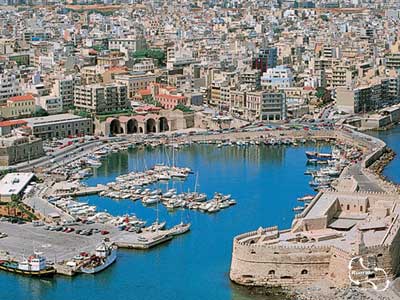
The Koules fortress in Iraklio ‘s Venetian harbour
Koules, the coastal fortress at the city’s port is nowadays a restored monument, whose halls were once used for food and ammunition storage, and even as prison cells. Now it’s renovated and exhibits Venetian sculptures as well as underwater treasures retrieved by Jacques Cousteau in the surrounding regions and around the island of Dia. The fortress was originally built around 1530. It offers a panoramic view of the Gulf of Iraklio and the former mentioned island.
Fortifications of Iraklio, center of activity
The Venetian walls, which construction was initiated by the Venetians in 1462 and required 150 years to complete, are among the largest fortifications in the Mediterranean. Surrounding ‘the Old Town’, the walls featured seven bastions, seven main gates and numerous military gates, a moat and a gunpowder magazine.
Oasis, the 1.200 capacity Nikos Kazantzakis open-air garden theatre, is located between the Jesus and the Martinengo bastions. The celebrated writer’s tomb is situated within the latter, while they have made a permanent exhibition on his life and work in the Jesus bastion. The small-sized Manos Hatzidakis garden theatre is also situated in this bastion.

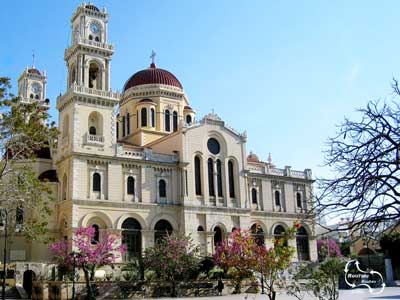
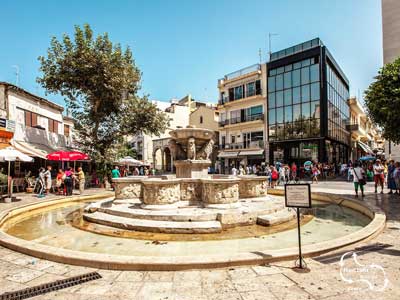

Beautiful buildings and discoveries
The Loggia, a masterpiece of Venetian architecture built between 1626 and 1628 as a meeting place for the nobility and officials, nowadays serves as the city’s Town Hall. Standing alongside it, the magnificent Agios Titos church features wonderful stained-glass art. Located really close is the Morosini or better known as ‘Lions’ fountain, on the Liontaria Square. This is one of Iraklio ’s most striking monuments and generally used as meeting point in the city centre.
South east, at only a 5 km distance, from this vibrant city is the excavation terrain of the Palace of Knossos. Covering more than 2 hectares, it’s the largest of the Minoan period’s centers. Intricate and multi-leveled, it was discovered and restored, to a great extend, by British archaeologist Sir Arthur Evans.
Other Routaki routes:
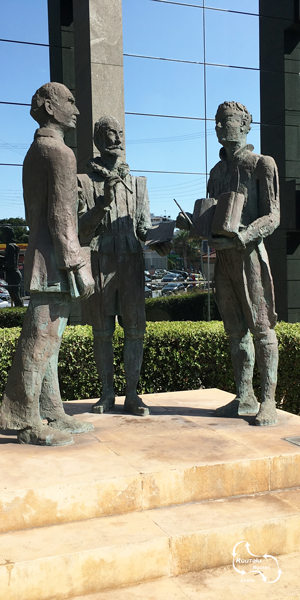
This topic is mentioned in….
Excerpt from the CARROUTE TO ANOGEI, AXOS AND MARGARITES, where the following is described…..
“While driving here you have a beautiful view over the capital city of the island. Heraklion, or Iraklio has officially been the capital of the island since 1971. A significant portion of the city was destroyed during a severe earthquake in 1926 and the Second World War. Many buildings from the Byzantine, Venetian, and Turkish periods were lost and unfortunately not reconstructed in the same style during the rebuilding.
Around 1900, Heraklion had only 12,000 inhabitants, but its major growth period began when, in 1923, large groups of Greeks expelled from Turkey were resettled on Crete, particularly in Heraklion. Now, the city has approximately 150,000 residents, making it the largest city on the island and the fourth-largest city in Greece.
As the capital of the island, Heraklion boasts several important attractions, such as the Archaeological Museum. It is considered one of the most prominent archaeological museums globally and houses artworks from prehistoric to historical times, including masterpieces like the Snake Goddess figurines.
The “Historical Museum of Crete,” located on the newly renovated promenade, is also worth a visit. It displays, among other things, the paintings of El Greco, the only works by the artist, who was born in Heraklion, found on Crete. There is also a collection of the famous writer and philosopher Nikos Kazantzakis.
Koule, the fortress in the city’s harbor, dates back to 1530. It has been renovated and features an exhibition of Venetian sculptures and underwater treasures recovered in the surrounding region and around the island of Dia by Jacques Cousteau.
The Venetian fortification walls, also built during this period, are among the largest fortifications in the Mediterranean. The Loggia, a masterpiece of Venetian architecture built between 1626 and 1628 as a meeting place for nobility and officials, now serves as the town hall in the city centre. Adjacent to it is the magnificent Agios Titos church with its beautiful stained glass windows.
Close by, you’ll find the Morosini Fountain, better known as the ‘Lion’s Fountain’ in Liontaria Square. It is one of the most prominent landmarks in Heraklion and is commonly used as a meeting point in the vibrant city center.
So it’s worthwhile a visit if you didn’t already do so. You may consider using my city walk within the VoiceMap app.
Continue along the road. You’ll hear from me soon.”
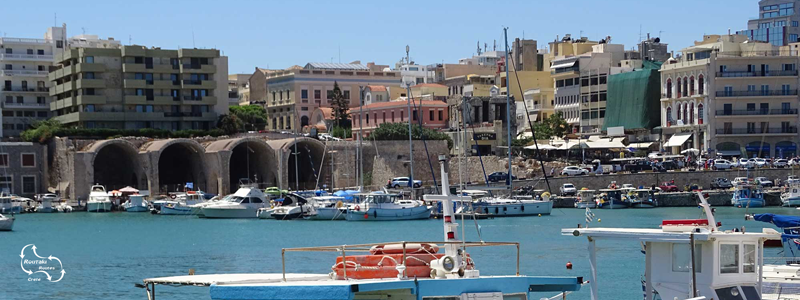
What also may interest you:
City Walk Rethymnon – GPS interactive audio tour.
You can experience this beautiful old town with the interactive GPS app VoiceMap. Download the app for free and select ‘Rethymnon’. In the webshop of this site,
you can purchase a code that provides access to all the information you need to enjoy a fantastic day exploring Rethymnon.Would you like to get a first impression?
Then start by reading this page about Rethymnon.
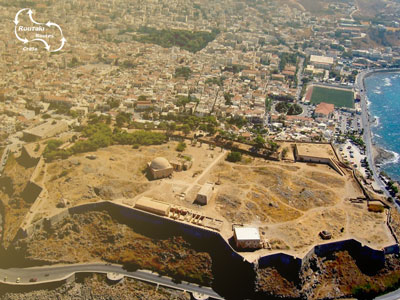
Or read one of these articles:
The small houses in the fields are for the farmers to rest. They are called Metoxi.
Read about the terrible incident that took place in the Milatos Cave.
Paul Kuipers the Dutch man, who introduced the hot houses system on Crete.


